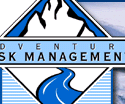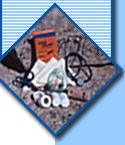|

What
is Wilderness Medicine?
Wilderness Medical Associates courses address three problems not
covered in traditional EMT and Emergency Response courses: (1) Extended
Patient Management; when hours or days stand between a patient and
the hospital, phases of patient care that usually occur in an emergency
room must be carried out in the field. Rescuers need to be prepared
for this challenge, under conditions far removed from the ideal
hospital setting. (2) Extreme Environments; extremes of heat, cold
and altitude can pose serious problems of their own. Hypothermia
and frostbite, for example, may complicate a trauma victim's condition
and will also pose a risk to rescuers. The simplest tasks become
difficult when the environment is hostile, potentially causing both
assessment and treatment to suffer. (3) Limited Equipment; the more
remote the setting, the less equipment will be initially available.
Improvisation is an essential skill in the wilderness setting.
Why
are your courses so Expensive?
We acknowledge that our courses are expensive compared with First
Aid and EMT courses, however, they are quite reasonable compared
with other high quality seminars. It is not cheap to maintain a
top-notch instructor staff, a Quality Assurance standard second
to none, and a research and development program devoted to continual
improvement in curriculum and materials.
What
certification materials will I receive?
Graduates receive a certification card, patch, and pin at the level
of the corresponding training, as well as certification in the
use of injectable epinephrine for anaphylaxis, and on most courses,
CPR certification is included. Wilderness Medical Associates maintains
permanent records of all courses, so you or an employer may call
us any time to obtain verification of certification by mail or
FAX, or immediate replacement of certification cards at no additional
charge.
How
long does certification last?
Three years. Wilderness Medical Associates WEMT and WFR graduates
may take a 16 hour recertification course, a 36 hour Wilderness
Advanced First Aid Course or Bridge Course, or the 27 hour Challenge/Recertification
Course. WMA WAFA graduates may recertify via a 16 hour Recertification
Course, or via the 27 hour Challenge/Recertification course. (Alternatively,
the WAFA can be upgraded to the level of WFR via the ‘Bridge
Course’.) Once certification has expired, students must take
the full course over again. We recommend a full course at least
once every six years.
I
need to recertify my current WAFA, WFR, or WEMT module. What are
my options? To ensure that you are eligible for recertification,
download the document entitled Recertification
Answer Sheet.
If you have further questions, contact Wilderness Medical Associates
at 207.797.6005. WMA-certified WEMT or WFR’s may recertify
by way of a Challenge Course, Wilderness Advanced First Aid,
Bridge Course, or a Recertification Course. WMA WAFA grads may
recertify by way of a Challenge Course or Recertification Course.
Graduates of all other programs may recertify via the Recertification/Challenge
Course (click here for course description).
Verification of training is required.
What
is the best course for an outdoor leader, the WFR or the WEMT?
We recommend the Wilderness First Responder course to outdoor leaders
for two reasons. First, the WFR focuses mainly on medical improvisation
using expedition materials such as backpack frames, and ski poles.
The Wilderness EMT devotes more time to field use of high-tech gear
such as remote ventilation and IV pressure infusion systems. Second,
outdoor leaders tend to be a nomadic lot and EMT reciprocity requirements
differ dramatically from state to state.
Doesn't
advanced medical training put me more at risk of getting sued?
An outdoor professional or EMS provider who actively seeks out the
most appropriate education available and who gains the confidence
to use the knowledge and skills in a prudent manner is better protected
against medical liability than a rescuer who avoids such training.
|




